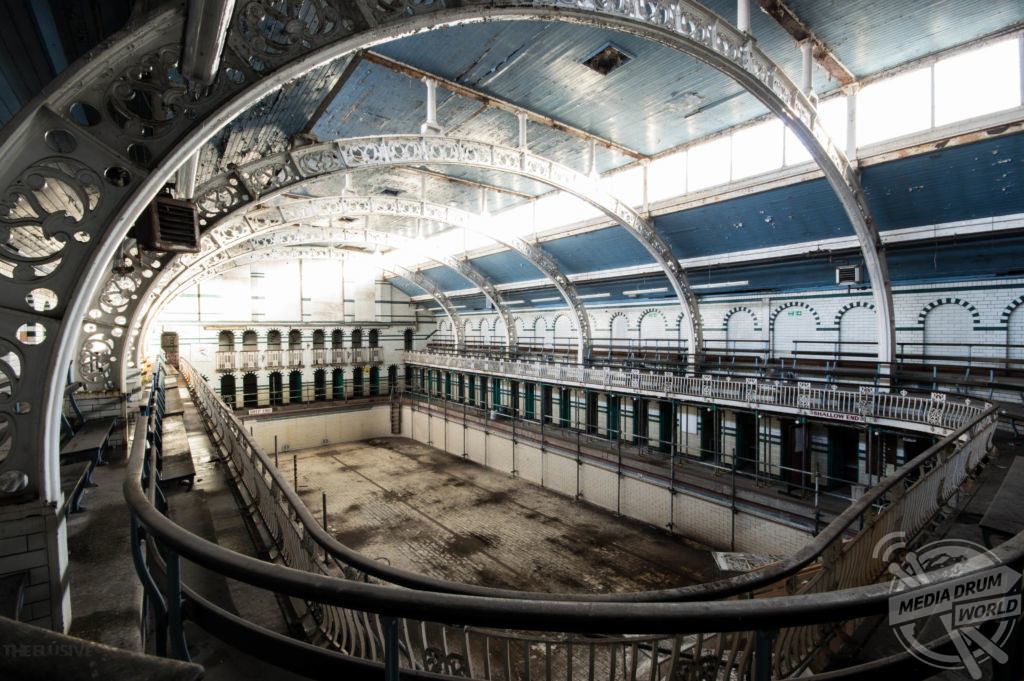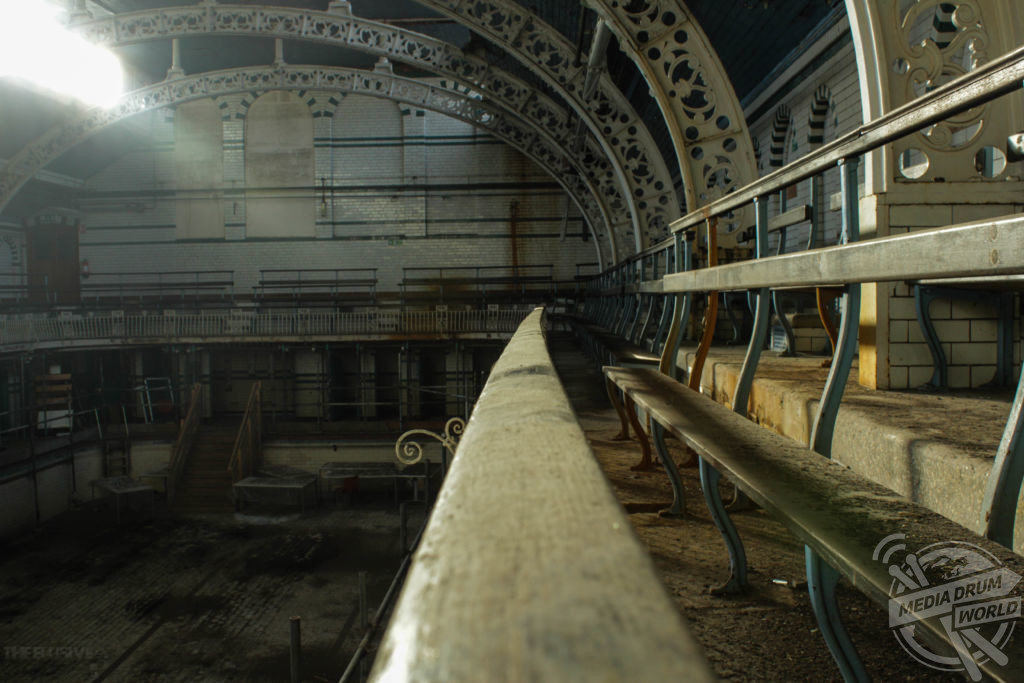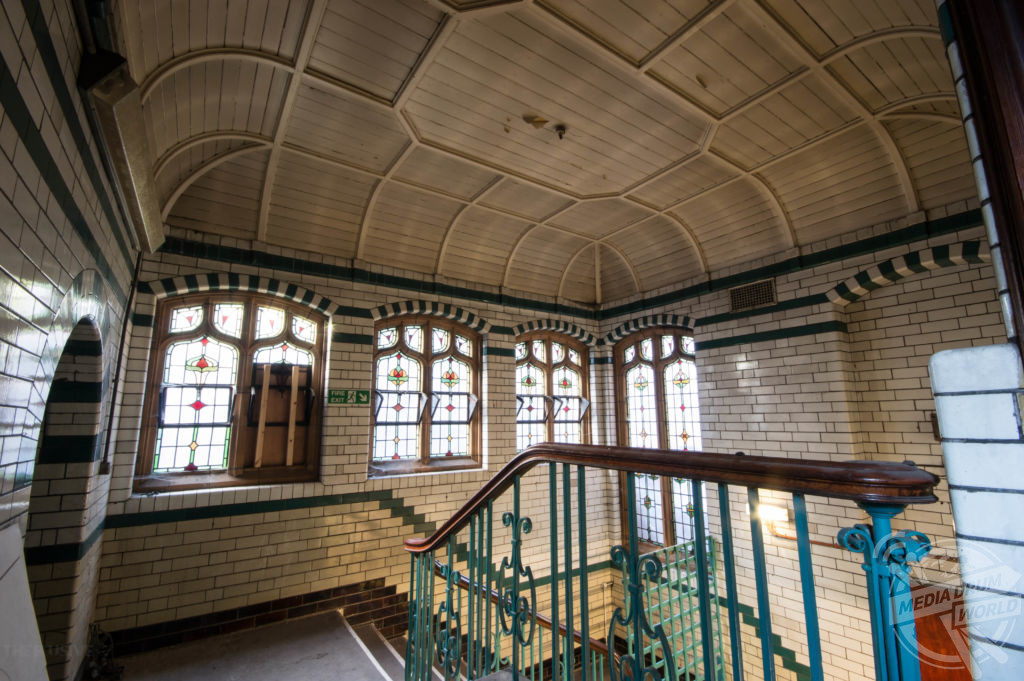By Mark McConville
THE HIDDEN beauty of an abandoned public baths dating from the early 1900s has been revealed in a series of stunning snaps.
The incredible images show the enormous room inside with tiled floors and walls, the striped pattern along the walls and the ornately designed ceilings.

Other striking shots show the locker rooms, protective railings to stop people falling from the upper balconies overlooking the huge hall and the red-brick exterior of the building.
The remarkable photographs were taken at Public Baths, Moseley in Birmingham, UK by an urban explorer who wished to remain anonymous.
“These images show you one of the most amazing closed spaces from the Edwardian Times,” they said.

“You can hear the happy noises of people enjoying the swimming pool that is still open inside the empty space.
“It was constructed in 1907 and is red brick and terracotta as well as being Grade II* listed. There is lots of architecture features throughout the building, which has been saved by the community and the hard work of the volunteers.
“It’s been threatened with closure many times but the community, the people refused to see it closed. Their determination is as amazing as the building itself.”

The baths were opened in 1907 as an addition to the Free Library (1895) forming a group of public buildings. Threat of closure has been averted with the swimming group taking over the swimming operation until 2021.
Options for the future are being explored and Historic England is providing a substantial repair grant for the Gala pool roof in conjunction with Birmingham City Council. The development phase of works has commenced.

“This is my favourite type of place to explore as it gives you a chance to see something you would never normally get to see and how it works,” added the urban explorer.
“The baths, which is joined a library, would have been one the places the community would have gone socially. Many people wouldn’t have had their own baths or drying facilities so they would have gone t places like this.”







